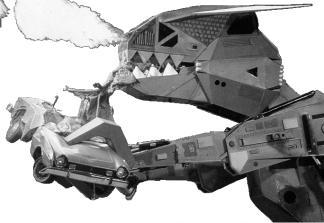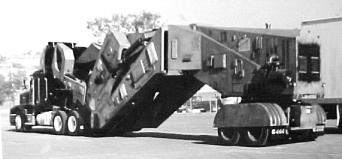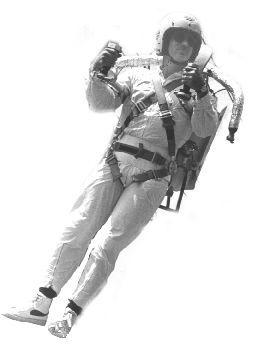Douglas J. Malewicki - Inventor of SkyTran/Company Founder
Malewicki is the inventor of the SkyTran light weight, high speed, low cost, on-demand, personalized MagLev transit concept. He is also President and Chief Scientist for AeroVisions Inc., a company he founded in 1974 for the purpose of developing, promoting and commercializing his numerous inventions. These include his super-aerodynamic CALIFORNIA COMMUTER. Malewicki set two official Guinness World records for achieving over 150 miles per gallon fuel efficiency on cross-country runs at freeway speeds with the CALIFORNIA COMMUTER.
In addition to being a prolific inventor, Mr. Malewicki is a specialist in the areas of:
- Low-cost design innovation,
- Aerodynamics,
- Engineering structural analysis,
- Automation consulting, and
- Vehicle performance analysis.
Mr. Malewicki earned a Masters of Science degree in Aeronautics and Astronautics from Stanford University. He has authored numerous technical papers, several books and a cover feature article for Scientific American magazine. He is a visionary who enjoys creating "impossible" machines.
Check out Dougs www.CanoSOARus.com web site to learn about the RB-2000 personal rocket belt; the 248 mph " White Lightning" - official world's fastest electric car; the new "F-18 Jet Bike" - an afterburning jet powered motorcycle; and his X-1 Skycycle canyon jumping rocket built for Evel Knievel.Mr. Malewicki is a skilled craftsman who understands machining, welding, advanced composites manufacturing, plastic injection molding, etc. He understands what can and can't be built and the economics involved in applying these technologies.
Doug is also an avid trail runner, backpacker and cyclist. He completed the Saddleback Mountain Marathon in November of 2003 and ran two Ultra 50K Trail Races in 2004. August 2004 was his 4th ascent to the top of Mount Whitney - highest spot in the 48 contiguous States. During August 2002 he completed his fifth bike ride down beautiful Pacific Coast Highway 1 from San Francisco to Los Angeles (540 miles).
__________________________________________· Doug was on The Learning Channels Junkyard Wars. See: www.sshs57.com/photos/020430.htm
· See: Aug 02 Popular Science C2C article - www.sshs57.com/photos/020801.htm
· Transportation Web Site: www.SkyTran.net
· Invention Web Site: www.CanoSOARus.com
· Douglas J. Malewicki · President/Chief Scientist · AeroVisions, Inc.
· 14962 Merced Circle, Irvine, CA 92604 · Phone/ FAX: (949) 559-7113
· EMail: D.Malewicki at SkyTran.net
____________________________________
· "Waking up in Reno" is a Miramax Comedy with Billy Bob Thornton, Charlize Theron, Patrick Swayze & Natasha Richardson. Two redneck couples from Arkansas team up to hit the road to see Robosaurus (Doug Malewicki's patented invention) perform at a monster truck show in Reno, Nevada.
Nationwide release: October 25, 2002.
See: www.canosoarus.com Trailer at: http://us.imdb.com/Trailers?0219400__________________________________________
Engineering Design & Analysis Background
BS Aeronautical & Astronautical Engineering, U. of Illinois, High Honors
MS Aeronautical & Astronautical Engineering, Stanford University
Inventor of the SkyTran concept; all design and engineering for related US PatentsApollo-Saturn V man to the moon program, Senior Structural Loads Analyst
Lunar module/Service module Structural dynamic response analysis showed that the units docking ring structure had to be strengthened to withstand a possible hard-over thruster engine failure.
Launch Escape Abort System Dynamic analysis and software for pyrotechnic event that deployed stabilizing canards.Cessna Military-Twin Division, Senior Flight Test Engineer
Cessna T310Q twin turboprop Complete FAA certification for a payload increase required flight testing to establish take-off, landing, stall, single engine climb and autopilot failure performance.
Cessna Citation Business Jet - Analysis of performance and flight characteristic derivatives for Cessnas first business jet. Was 10th person ever to fly in N500CC prototype.McDonnell-Douglas, Flutter Analyst
DC8-61 Passenger Jet - Development of Fortran software to establish critical flutter speeds for structural control components.Northrop Aircraft Company, Senior Technical Specialist, Advanced Composites Manufacturing
B-2 Stealth Bomber Codeveloped radar adsorbent composite materials coatings and built automated processing plant for applying same. Performed research to form and weld thermoplastic graphite composite parts.
Inventor of and holder of two USA Patents for Robosaurus. Founded Monster Robots, Inc. Involved in finding all investors and product sponsors. Complete structural design (loads determinations, weights and stress analysis). All vendor sourcing. Developed innovative wearable control system enabling a single pilot to simultaneously control 18 proportional hydraulic motions. Electronic, hydraulic and control system packaging. Functional testing.
Much of the Robosaurus structural design involved tradeoffs to enable transformation to a legal trailer for hauling the 58,000 pound, fire-breathing, beast from show to show. Robosaurus meets highway size and weight requirements for all 50 States.
Last NDT (non destructive testing) weld inspection performed at 250,000 miles.
RB 2000 Personal Rocket Belt 90% strength Hydrogen Peroxide Monopropellant powered.
Catalyst pack design. Internal flow analysis. Nozzle design and sizing to obtain desired thrust levels. Non-linear flight duration analysis.
Doug has been using Newton's Laws of motion to analyze how vehicles of all sorts perform for decades. He gets very frustrated with politicians who don't want to spend the time to understand simple math and physics concepts. Wants to grab them by the ear and drag them into a good high school and force them to sit for a semester of math and physics. He knows that many high school students understand the SkyTran principles and fully grasp the implications for the future of the planet far better than most politicians. Doug wrote extensively about theoretical performance of Model Rockets back in the late 1960's and early 1970's. These youngsters were sharp - they got it! You can read some of these old articles below.
MODEL ROCKETRY
The Journal of Miniature Astronautics
TECHNICAL ARTICLES
by
Douglas Malewicki
TECHNICAL EDITOR33 issues of the magazine have been scanned in and are available as Adobe PDF files.
For the link to each months complete issue go to the TABLE OF CONTENTS at:
http://www.ninfinger.org/~sven/rockets/ModelRocketry/ModelRocketry.htmlAugust 1969
The Radio Controlled Boost Glider .Page 5
The first in a series on the art of rocket glider control by radio
(PDF pages 7-10)
September 1969
The Radio Controlled Boost Glider .Page 36
Part II
(PDF pages 38-41)
October 1969
The Radio Controlled Boost Glider .Page 33
Part III (with cover color photo of launch of the RC/BG)
(PDF pages 35-37)
November 1969
World Height Record Established . .Page 22
(PDF pages 24-25)
December 1969
Boost/Glide performance . .Page 34
(PDF pages 38-44)
January 1970
Boost/Glide performance .Page 42
Part II
(PDF pages 44-47)
February 1970
Boost/Glider Performance: Part III .Page 19
See how close your gliders performance matches the theory
(PDF pages 21-24 & 20)
March 1970
D-Engine Performance Charts . Page 34
Burnout Altitude and Velocity, Coast time, and Maximum Altitude Curves
(PDF pages 36-40)
April 1970
Drag Coefficient Measurements . ... Page 34
Latest wind tunnel results indicate a Cd = 0.5 to be a good average
(PDF pages 37-38)
April 1970
Cover color photo of flying Apollo Capsule article .. .Cover
Discussion of Dougs Apollo model by Tom Milkie .. ....Page 29
(PDF pages 32)
May 1970
Wind Tunnel Study of the Nighthawk B/G Page 18
The Lift, Drag and Pitching Moment coefficients are presented
(PDF pages 20-24)
June 1970
Simplified Parachute Duration Analysis . .Page 16
Graphical relation between chute diameter and duration
(PDF pages 18-19)
July 1970 (with Carl Kratzer)
Experimental Parachute Duration Results . Page 30
Compare Carl Kratzers Drop-Test results with theory
(PDF pages 33-36)
February 1971 (with Jim Anderson)
Altitude Lost by Early or Late Ejection ..Page 27
A technical report explaining the disadvantages of using too long or to short of a delay charge in your model.
(PDF pages 30-34)
Malewicki gained a lot of insight into assembly line production and the cost benefits of automation while working as Manager of Advanced R&D at L. M. Cox Manufacturing (1970-1975), as Chief Designer at Chad Industries (1978 -1979), as VP of Engineering at Industrial Support Solutions (1993-1995).
He gained his insight and understanding of low speed aerodynamics and the importance of streamlining through his engineering degree courses, while working at the aerospace companies, especially while working as a Senior Flight Test Engineer at Cessna, through his involvement with streamlined human powered vehicles (the IHPVA & the subject of his Scientific American cover feature article December 1983), the design, building and driving his California Commuter into the Guinness Book of World Records (1980 & 1981) and, of course, his long involvement with model rockets.
Back to CONTACT page


